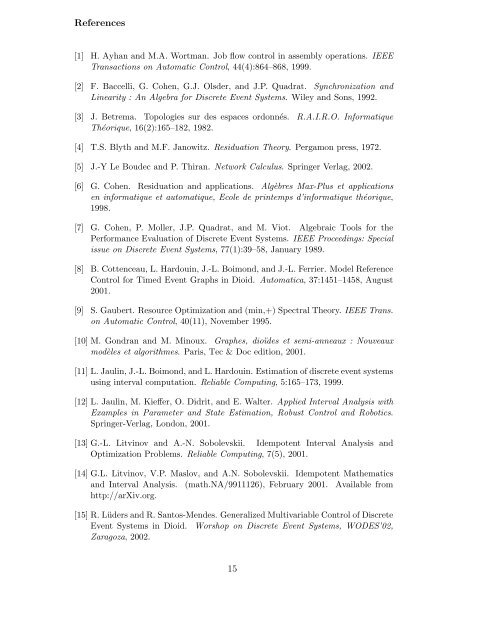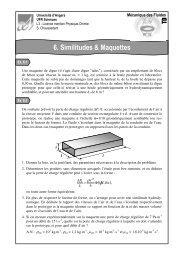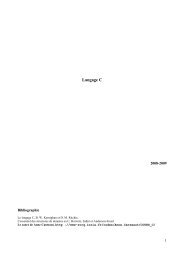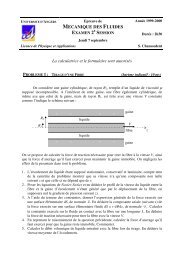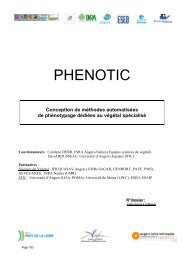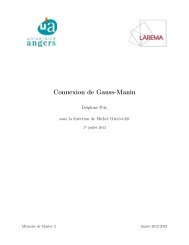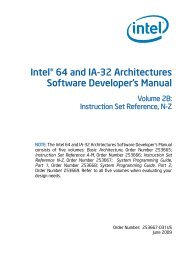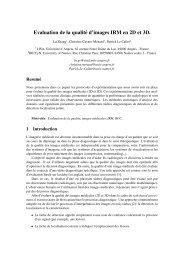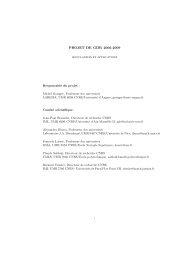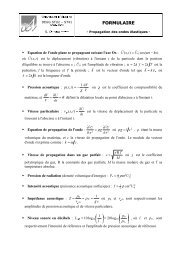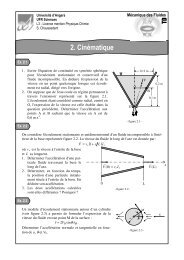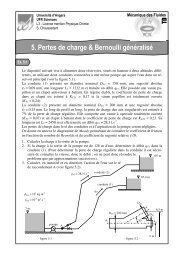Interval Analysis and Dioid : Application to Robust ... - ResearchGate
Interval Analysis and Dioid : Application to Robust ... - ResearchGate
Interval Analysis and Dioid : Application to Robust ... - ResearchGate
Create successful ePaper yourself
Turn your PDF publications into a flip-book with our unique Google optimized e-Paper software.
References[1] H. Ayhan <strong>and</strong> M.A. Wortman. Job flow control in assembly operations. IEEETransactions on Au<strong>to</strong>matic Control, 44(4):864–868, 1999.[2] F. Baccelli, G. Cohen, G.J. Olsder, <strong>and</strong> J.P. Quadrat. Synchronization <strong>and</strong>Linearity : An Algebra for Discrete Event Systems. Wiley <strong>and</strong> Sons, 1992.[3] J. Betrema. Topologies sur des espaces ordonnés. R.A.I.R.O. InformatiqueThéorique, 16(2):165–182, 1982.[4] T.S. Blyth <strong>and</strong> M.F. Janowitz. Residuation Theory. Pergamon press, 1972.[5] J.-Y Le Boudec <strong>and</strong> P. Thiran. Network Calculus. Springer Verlag, 2002.[6] G. Cohen. Residuation <strong>and</strong> applications. Algèbres Max-Plus et applicationsen informatique et au<strong>to</strong>matique, Ecole de printemps d’informatique théorique,1998.[7] G. Cohen, P. Moller, J.P. Quadrat, <strong>and</strong> M. Viot. Algebraic Tools for thePerformance Evaluation of Discrete Event Systems. IEEE Proceedings: Specialissue on Discrete Event Systems, 77(1):39–58, January 1989.[8] B. Cottenceau, L. Hardouin, J.-L. Boimond, <strong>and</strong> J.-L. Ferrier. Model ReferenceControl for Timed Event Graphs in <strong>Dioid</strong>. Au<strong>to</strong>matica, 37:1451–1458, August2001.[9] S. Gaubert. Resource Optimization <strong>and</strong> (min,+) Spectral Theory. IEEE Trans.on Au<strong>to</strong>matic Control, 40(11), November 1995.[10] M. Gondran <strong>and</strong> M. Minoux. Graphes, dioïdes et semi-anneaux : Nouveauxmodèles et algorithmes. Paris, Tec & Doc edition, 2001.[11] L. Jaulin, J.-L. Boimond, <strong>and</strong> L. Hardouin. Estimation of discrete event systemsusing interval computation. Reliable Computing, 5:165–173, 1999.[12] L. Jaulin, M. Kieffer, O. Didrit, <strong>and</strong> E. Walter. Applied <strong>Interval</strong> <strong>Analysis</strong> withExamples in Parameter <strong>and</strong> State Estimation, <strong>Robust</strong> Control <strong>and</strong> Robotics.Springer-Verlag, London, 2001.[13] G.-L. Litvinov <strong>and</strong> A.-N. Sobolevskii. Idempotent <strong>Interval</strong> <strong>Analysis</strong> <strong>and</strong>Optimization Problems. Reliable Computing, 7(5), 2001.[14] G.L. Litvinov, V.P. Maslov, <strong>and</strong> A.N. Sobolevskii. Idempotent Mathematics<strong>and</strong> <strong>Interval</strong> <strong>Analysis</strong>. (math.NA/9911126), February 2001. Available fromhttp://arXiv.org.[15] R. Lüders <strong>and</strong> R. San<strong>to</strong>s-Mendes. Generalized Multivariable Control of DiscreteEvent Systems in <strong>Dioid</strong>. Worshop on Discrete Event Systems, WODES’02,Zaragoza, 2002.15


